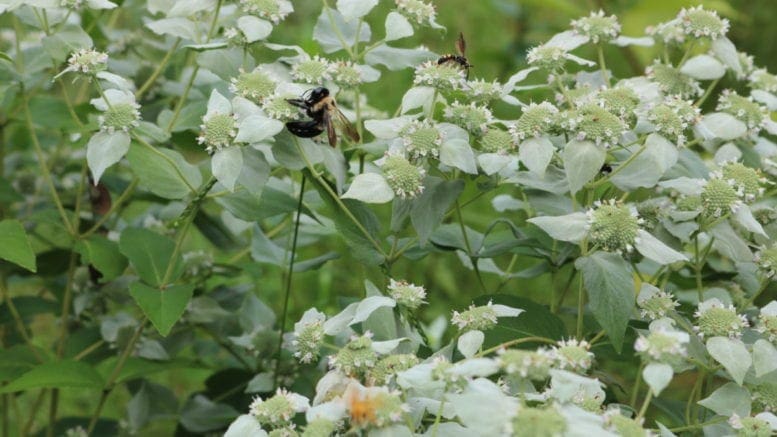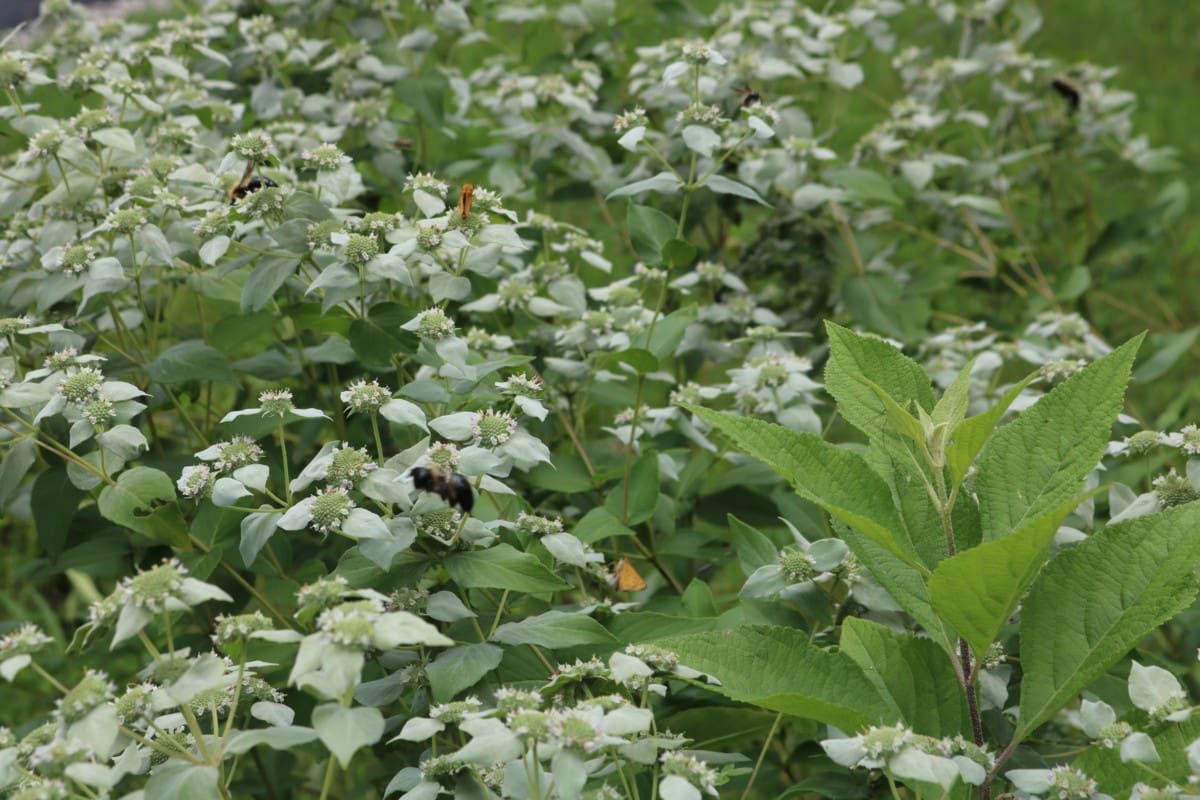Just under three years ago I attended a native plant work day at Heritage Park in Mableton, organized by the Georgia Native Plant Society. When the work ended, several people gave away native plants they had thinned out of their home landscape.
A gift from a native plants work day
One of the native plant enthusiasts had brought a bucket with a beautyberry bush, surrounded by several sprigs of native mountain mint. I wasn’t that interested in the mint, but it came with the beautyberry, the thing I really wanted, so I loaded both into my trunk, and planted them next to each other in the front yard.
For the first year, the mint’s growth was modest, but the next year it got tall, about waist height to me. I was accustomed to Mediterranean mints that behave like an invasive ground cover, so a mint that both spread and shot upward toward the sun surprised me. Then the flowers came: little white flowers surrounded by silvery leaves.
I’ve never determined exactly what kind of mountain mint it is (there are several varieties), but browsing images from the internet the closest match I can find is Pycnanthemum muticum. It’s native to the entire eastern United States from Maine to Florida, and westward to Missouri.
The pollinators arrive
Then came the bees and butterflies. Hundreds of bees at any given moment, and later in the summer dozens of butterflies. And not just one kind of bee. Bumblebees, honey bees tiny black bees, bees with bright yellow markings, bees with red and orange markings, and while the bees outnumbered the butterflies, there were still a variety of butterflies in all sizes and colors, from tiny orange ones to big black swallowtails.
The mint that I was tempted to just plant by a roadside somewhere had become a dense, thriving pollinator city.
Check out the bee and butterfly slideshow below



















